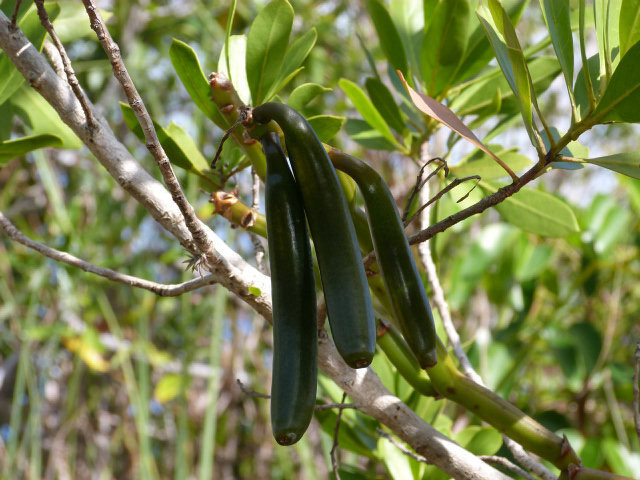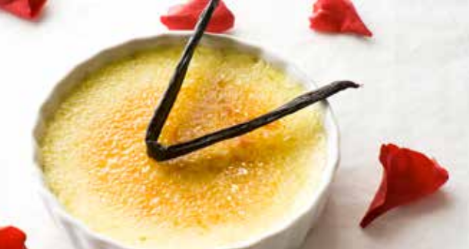There’s an Orchid in My Spice Rack: About the Vanilla Orchid

Did you know that the vanilla orchid, Vanilla planifolia, is the only orchid with black seeds, and each vanilla bean (really the pod) contains thousands of seeds?
Known for its popular aroma and the flavor it adds to baked goods and silky desserts, vanilla can be found in the grocery story in both extract and imitation forms—and the extract is always more expensive. Why? We can find the answers on a journey to Indonesia and Madagascar, the world’s largest producers of vanilla.
To produce pure vanilla extract, the beans from V. planifolia are laid out in the hot tropical sun to dry and cure for up to eight months. Once the dried beans have developed their flavors, they are crushed and placed in a mixture of alcohol and sugar. The aromatics of the beans will infuse flavors into the alcohol and water mixture for several months to make an extract. A pure vanilla extract must be 35% alcohol and use 13.35 ounces of vanilla beans per gallon of steeping liquid. Vanilla extract is the only flavor regulated by U.S. law. The process is labor-intensive and the product is pure and simple perfection to be added to a recipe.
The average cost of natural (pure) vanilla extract is about $4.50 per ounce. Imitation vanilla is man-made and most likely a synthetic vanillin. It is chemically produced using a combination of sugar, corn syrup and other sweetening agents, and is very easy to produce in large quantities. It tastes just like real vanilla and is used in more than 95% of our vanilla-flavored food products. Go ahead and look at the back of your favorite breakfast cereal, cookie or ice cream carton and you will likely see “natural and artificial vanilla” among its ingredients. The average cost of imitation vanilla is about 18 cents per ounce.
So you’ve done the vanilla/vanillin math on price difference—but nothing can compare to the taste profile of a pure vanilla extract in a recipe. Here is a simple seven-ingredient recipe for Créme Brulee, a creamy custard that will make a dinner complete and also satisfy any sweet tooth. This recipe is provided by Fairchild’s talented pastry chef, Frances Brown.

Shop Orchids in the Fairchild Plant Store
Crême Brulee
Ingredients
- 2 cups heavy cream
- 1/4 cup white sugar
- 1 pinch salt (optional)
- 1⁄2 vanilla bean
- 2 eggs
- 3 egg yolks
- 4 tablespoons white sugar
Directions
- Preheat oven to 300 degrees F and line the bottom of a large baking pan with a damp kitchen cloth.
- Bring a large pot of water to boil.
- While water is boiling, combine cream, vanilla bean, 1/4 cup sugar and salt in saucepan over medium heat. Stir occasionally for 4 to 5 minutes, until steam rises.
- In a medium bowl, beat egg yolks and eggs until smooth.
- Pour hot cream into eggs, a little at a time, stirring constantly, until all cream is incorporated. Pour mixture into four 6-oz. ramekins.
- Place ramekins on towel in baking dish, and place dish on oven rack. Pour boiling water into dish to halfway up the sides of the ramekins. Cover whole pan loosely with foil.
- Bake 25 to 30 minutes in the preheated oven, until custard is just set. Then chill ramekins in refrigerator for 4 to 6 hours.
- Before serving, sprinkle 1 tablespoon sugar over each custard ramekin. Use a kitchen torch or oven broiler to brown top for 2 to 3 minutes.
This article was written by Mary Neustein, and originally published in the Spring 2017 issue of the Tropical Garden. Minor changes from the print version of this article were introduced to improve readability in a digital format.
